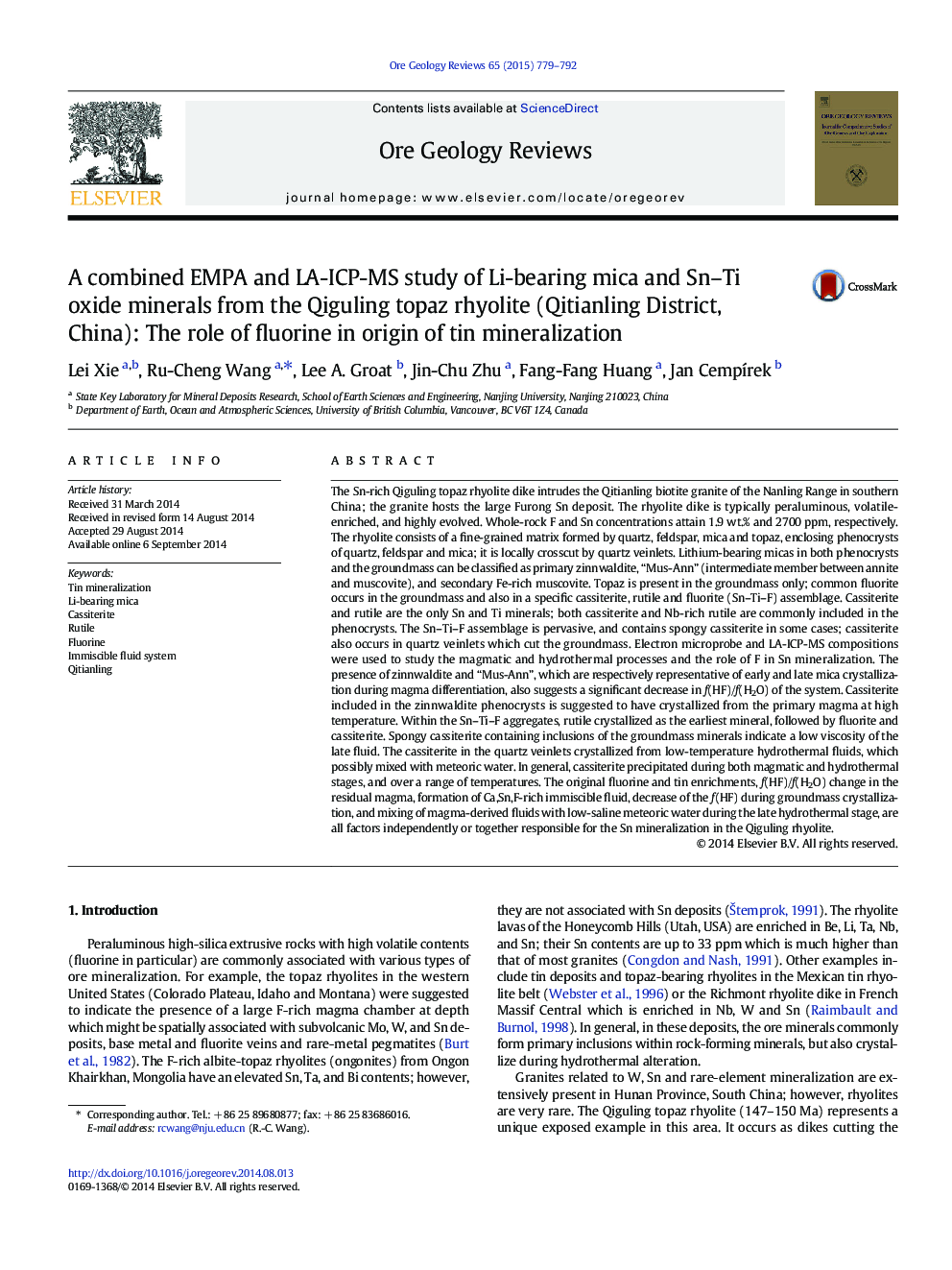| کد مقاله | کد نشریه | سال انتشار | مقاله انگلیسی | نسخه تمام متن |
|---|---|---|---|---|
| 4697142 | 1351864 | 2015 | 14 صفحه PDF | دانلود رایگان |

The Sn-rich Qiguling topaz rhyolite dike intrudes the Qitianling biotite granite of the Nanling Range in southern China; the granite hosts the large Furong Sn deposit. The rhyolite dike is typically peraluminous, volatile-enriched, and highly evolved. Whole-rock F and Sn concentrations attain 1.9 wt.% and 2700 ppm, respectively. The rhyolite consists of a fine-grained matrix formed by quartz, feldspar, mica and topaz, enclosing phenocrysts of quartz, feldspar and mica; it is locally crosscut by quartz veinlets. Lithium-bearing micas in both phenocrysts and the groundmass can be classified as primary zinnwaldite, “Mus-Ann” (intermediate member between annite and muscovite), and secondary Fe-rich muscovite. Topaz is present in the groundmass only; common fluorite occurs in the groundmass and also in a specific cassiterite, rutile and fluorite (Sn–Ti–F) assemblage. Cassiterite and rutile are the only Sn and Ti minerals; both cassiterite and Nb-rich rutile are commonly included in the phenocrysts. The Sn–Ti–F assemblage is pervasive, and contains spongy cassiterite in some cases; cassiterite also occurs in quartz veinlets which cut the groundmass. Electron microprobe and LA-ICP-MS compositions were used to study the magmatic and hydrothermal processes and the role of F in Sn mineralization. The presence of zinnwaldite and “Mus-Ann”, which are respectively representative of early and late mica crystallization during magma differentiation, also suggests a significant decrease in f(HF)/f(H2O) of the system. Cassiterite included in the zinnwaldite phenocrysts is suggested to have crystallized from the primary magma at high temperature. Within the Sn–Ti–F aggregates, rutile crystallized as the earliest mineral, followed by fluorite and cassiterite. Spongy cassiterite containing inclusions of the groundmass minerals indicate a low viscosity of the late fluid. The cassiterite in the quartz veinlets crystallized from low-temperature hydrothermal fluids, which possibly mixed with meteoric water. In general, cassiterite precipitated during both magmatic and hydrothermal stages, and over a range of temperatures. The original fluorine and tin enrichments, f(HF)/f(H2O) change in the residual magma, formation of Ca,Sn,F-rich immiscible fluid, decrease of the f(HF) during groundmass crystallization, and mixing of magma-derived fluids with low-saline meteoric water during the late hydrothermal stage, are all factors independently or together responsible for the Sn mineralization in the Qiguling rhyolite.
Journal: Ore Geology Reviews - Volume 65, Part 4, March 2015, Pages 779–792